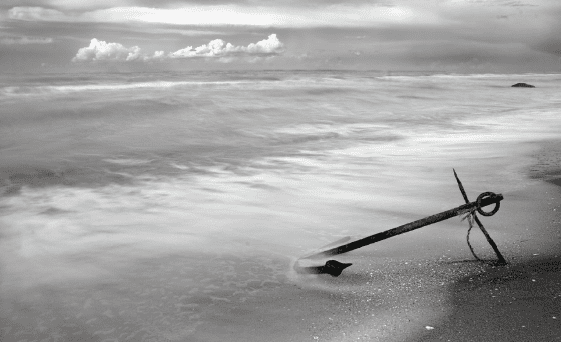Finding Anchor in the Challenging Journey of Church Planting
Jill Riley is the planting pastor of Navigate Covenant Church in Billings, Montana.
[divider type=”dotted”]
I once saw a children’s book titled When I Was Little: A Four-Year-Old’s Memoir of Her Youth. Even though I’ve been a pastor for more than two decades and am currently involved in my third church plant, I still feel a little like a toddler looking back at her infancy in ministry. I’m not mature (my congregants can vouch for that), and I don’t really feel like a grown-up minister yet. In many ways it feels like I just began this ministry crawl.
The perpetual child in me kind of hopes I always feel this way. Childhood carries with it wonder at the world and the things in it. Being a child brings the freedom and careless abandon of being willing to bump into things, try new ideas, jump off high places, and put pieces from one play set into another, just to see if they’ll work. Sometimes in those playful experiences there is genius; often there’s just dumb luck. Either way the joy of discovery is present, as is creativity and the boundary-less experimentation we often lose as adults.
This is what I love about planting churches. It is a fresh piece of paper with a new box of crayons—open to any and every creative possibility.
This is also why I love entrepreneurs and church planters. Their spirit captivates me. They fuel my adrenaline and imagination. As an entrepreneur and church planter myself, let me be the first to shout that I am not an expert at either.
She was a beautiful young woman. Kathy was petite with big blue eyes and beautifully coiffed blonde hair. She looked just like a happy sprite.
However, this was just the mask, the outward persona she presented to the world. Kathy had come to us, like everybody else, with troubles. Depression and anxiety nagged and pestered her in not so subtle voices, causing her to question her value and existence. The loss of a child and a divorce had left toxin in her soul that gnawed away at her.
One Tuesday during a “new people” dessert I was thrilled to see Kathy. While we ate I asked each person to share how they had come to our church and what was important to them about it. Kathy told the group how welcome she felt at Navigate Covenant Church and how she loved that she could be herself with us.
Winner! This was music to my pastor ears! Pastors of new churches work and hope so desperately that our churches will be a place where people can find peace, community, and joy. Seeing that fulfilled in someone’s life is nothing short of thrilling.
The next time I saw Kathy was Sunday. She arrived late and sat with friends. She got out the door before I could talk to her. I waved as she left by herself.
The following afternoon, at around 4:30, Kathy talked to her mother on the phone, made the final preparations for dinner, got into her car, drove out to a remote road, and shot herself in the chest.
The mortician warned me before we viewed Kathy’s body that she looked “odd.” She asked me to warn her parents that Kathy had a smile on her face, and no, they had not “made” her face do that. The smile was peaceful, serene, and relaxed. Odd indeed for someone whose pain had pushed her over the edge of life into self-imposed death.
My first meeting with Kathy’s parents was in their kitchen. The house was perfectly tidy — what contrast to the chaos their hearts were in. Their grief was obvious. I was shocked when they showed me documents they had found in their daughter’s room: her living will, last will and testament, a do-not-resuscitate order, a self-written obituary, and letters to her family and friends. There was even a list of her favorite songs that she wanted played at her funeral service. It dawned on me that this young woman had been planning her death since the first moment I met her only a month earlier.
 As I prepared her eulogy, my emotions and thoughts were a catastrophe. In addition to my own grief I wondered what in the world was happening. I had set out to start a church for people like Kathy—those who were wounded, afraid, suspicious of faith. But I wanted to see people thrive and love and live. I never planned on any of them dying, let alone killing themselves.
As I prepared her eulogy, my emotions and thoughts were a catastrophe. In addition to my own grief I wondered what in the world was happening. I had set out to start a church for people like Kathy—those who were wounded, afraid, suspicious of faith. But I wanted to see people thrive and love and live. I never planned on any of them dying, let alone killing themselves.
Unfortunately here I was and there they were; family and friends who knew her so well and who had loved her every day of her life. What was I going to say to them that was meaningful? I who had known her for less than a month? I wanted to start a church, not bury my congregants.
It was one of many moments in my life as a church planter that I wanted to forget the dream and quit. I wanted to quit being a pastor, a servant, and a part of a community that was hurting and was causing me hurt. It was also a moment when I went back to my anchor in Scripture.
Most spiritually healthy church planters I know have a scriptural anchor. They can remember a moment when God spoke to them through the word, inviting them into their place of call and service. I found my anchor sitting on the floor of a friend’s house in Bozeman, Montana, several years ago. My friends had invited me to partner with them on their church plant and great things were happening. I was spending the night with them in preparation for another Sunday worship gathering. The team was coming together and the church was growing daily. It was exciting and invigorating. Right in the middle of this time there were questions being posed to my spirit by friends and by God. They hung in the air like the cold fog over the mountains that surround the Bozeman valley.
“Can you lead a church?”
“Will you start a church?”
This, the Bozeman work, was my second time of being on a team that started a new church. My first experience was amazing. It ignited my passion and love of church planting. This second adventure was very different but no less amazing. Planting teams are passionate and vibrant and I love being a part of them. But lead a team? Start a church of my own? Oy.
So, there I was, Bible in my lap, sitting on the floor, basking in my insomnia, considering some daunting questions. At the time I happened to be in the midst of an Old Testament reading plan. All of a sudden, while I was doing my daily reading, the conversation between God and the prophet Jeremiah jumped off the page at me.
“The word of the Lord came to me, saying, ‘Before I formed you in the womb I knew you, before you were born I set you apart; I appointed you as a prophet to the nations.’ ‘Alas, Sovereign Lord,’ I said, ‘I do not know how to speak; I am too young.’ But the Lord said to me, ‘Do not say, “I am too young.” You must go to everyone I send you to and say whatever I command you. Do not be afraid of them, for I am with you and will rescue you,’ declares the Lord. Then the Lord reached out his hand and touched my mouth and said to me, ‘I have put my words in your mouth. See, today I appoint you over nations and kingdoms to uproot and tear down, to destroy and overthrow, to build and to plant’” (1:4-10, NIV).
This is why we call the word living. Suddenly it was as if God was speaking directly to me. Jeremiah’s fears and questions were a mirror of my own. In answering him, God met me.
Why should I plant a church? “I set you apart.”
I don’t know what to do. “Do not be afraid. I am with you.”
What will I say? “I have put my words in your mouth.”
Clearly these words were meant to reassure, empower, and undergird Jeremiah, but they did no less for me. These living words resounded through my head that night—and many times since. They spoke to me as I was ministering through the tragedy and loss of Kathy. They speak to me every time I question, doubt, or think about quitting.
Storms are inevitable. The seas will toss and roar. The purpose of an anchor is to keep a ship from drifting during rough times. That is also what a scriptural anchor will do for our spiritual life. A properly placed and used anchor keeps us steady and secure.
Sometimes when I counsel parishioners, in an effort to break them out of the cycle of confusing emotions, I ask them, “What is the last thing you know to be true?” In the particularly dry seasons of ministry and frightening times of life my anchor is that—the last thing I know to be true.
The anchor was placed before my dream had even really taken form. It was placed while the dream was still in dry dock. Before the dream ever met the wind or the waves, the anchor was placed at the ready. It preceded the people, the financial issues, and the struggles of starting a new work.
An anchor isn’t placed on a ship after it has set sail and called in just for an emergency. It is there when the ship leaves the dock in the event that it is needed to secure an endangered vessel in a tumultuous time.
The anchor holds
though the ship is battered,
the anchor holds
though the sails are torn.
I have fallen on my knees
as I faced the raging seas—
the anchor holds
in spite of the storm.
(Ray Boltz, “The Anchor Holds”)














